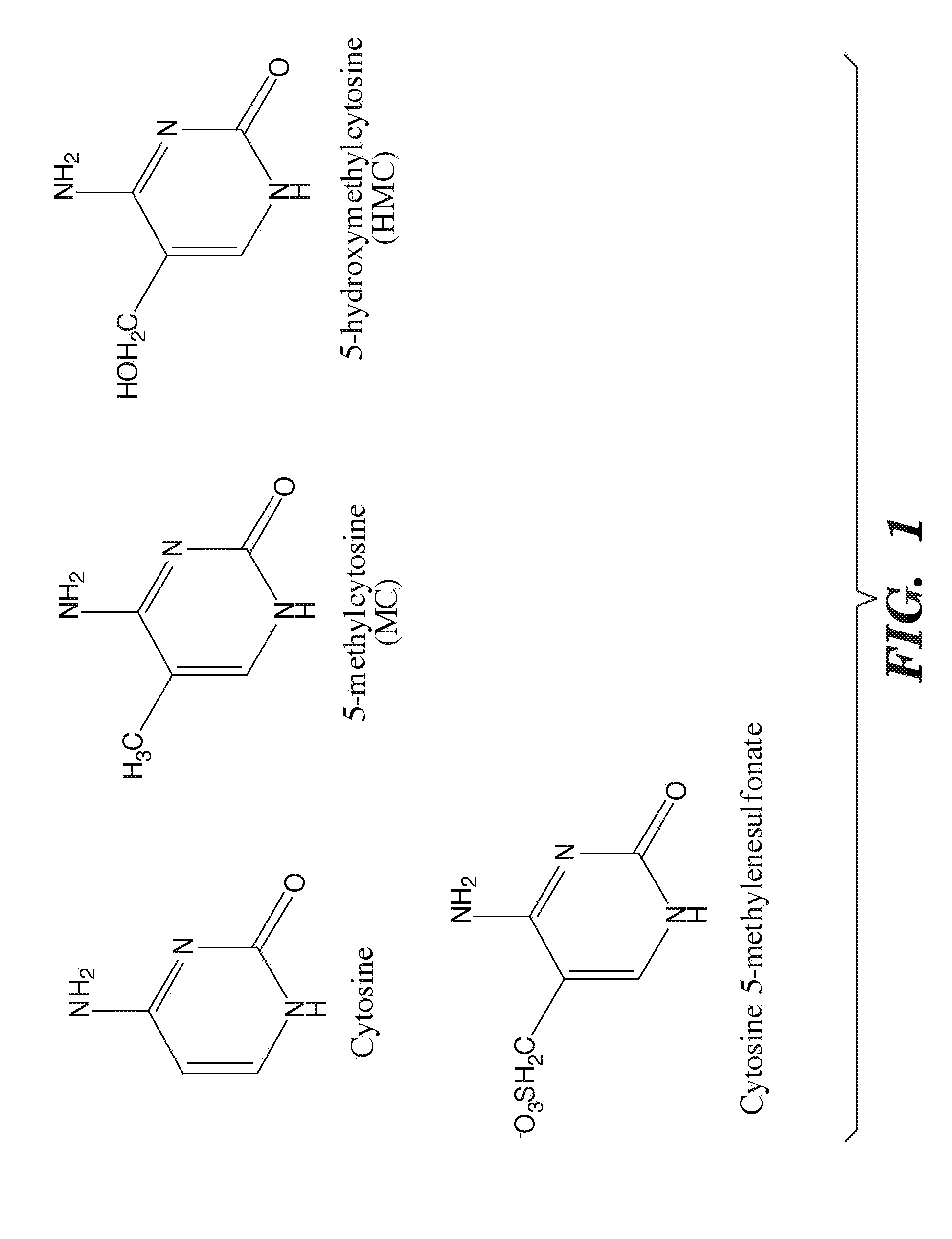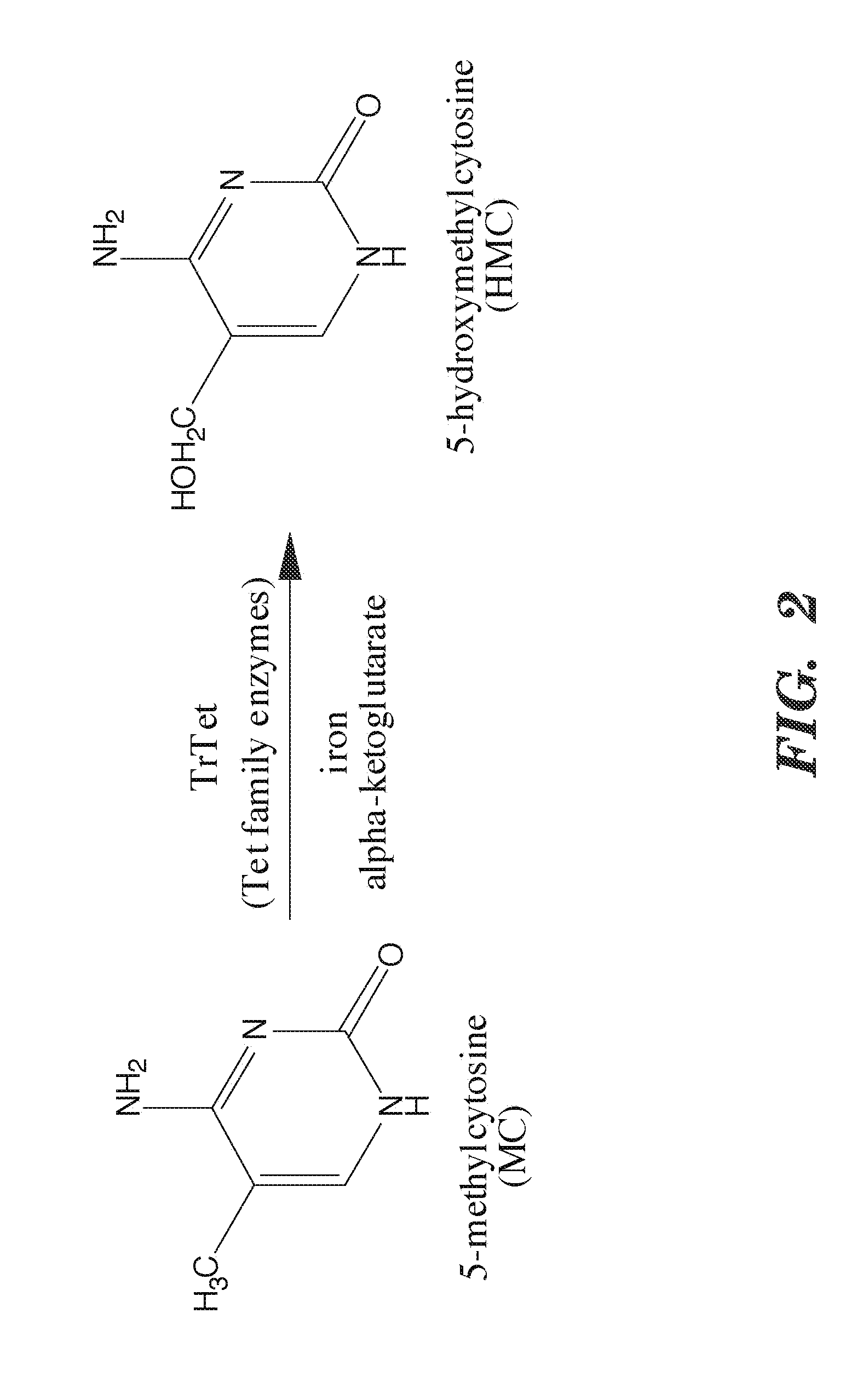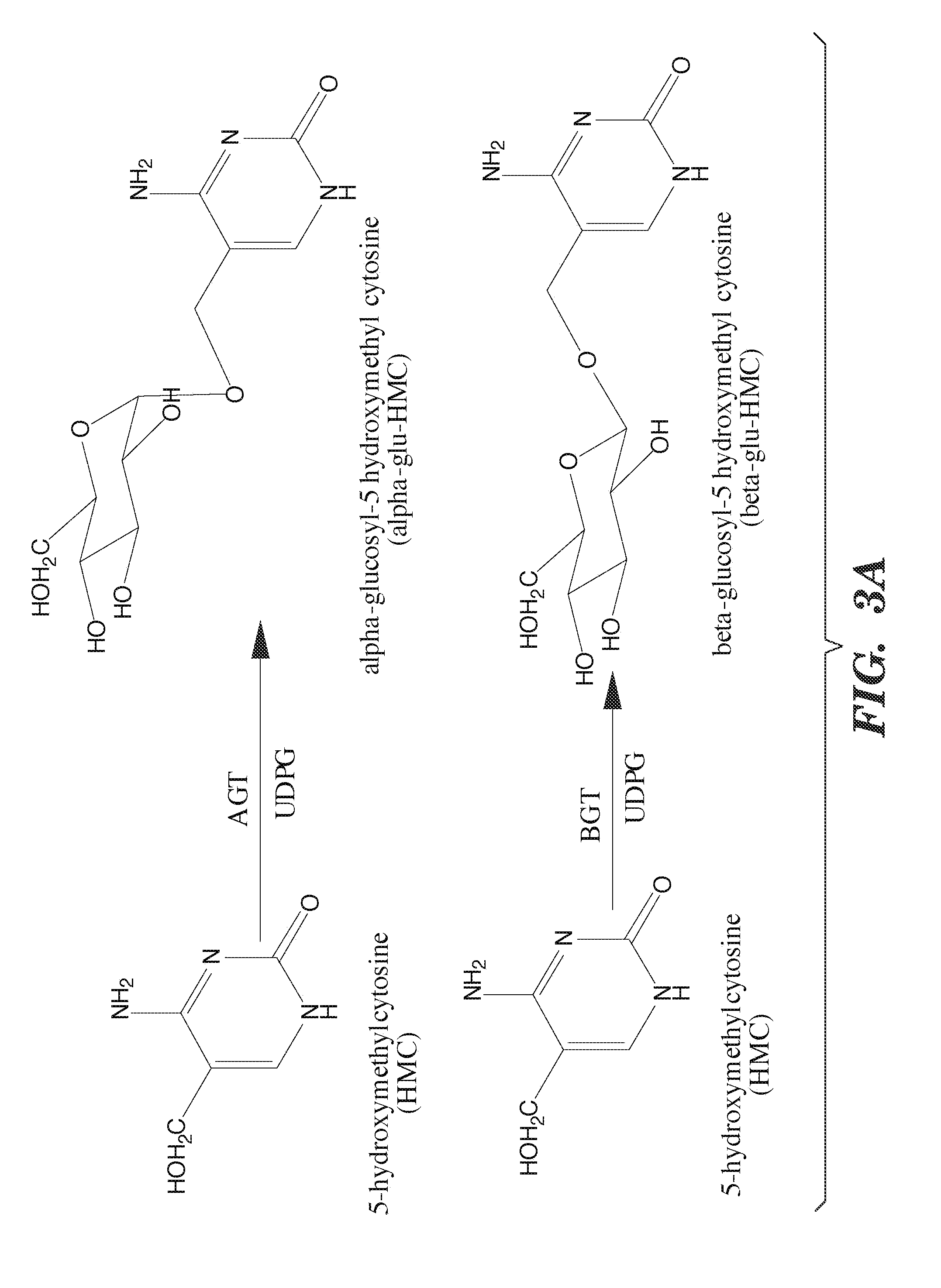Selective oxidation of 5-methylcytosine by TET-family proteins
a tet-family protein and selective oxidation technology, applied in the field of selective oxidation of tet-family proteins, can solve the problems of high aberrant dna methylation processes in cancer, and no proteins with these postulated activities have been reliably identified to date, so as to improve the efficiency of cloning mammals
- Summary
- Abstract
- Description
- Claims
- Application Information
AI Technical Summary
Benefits of technology
Problems solved by technology
Method used
Image
Examples
examples
DNA Methylation and Demethylation
[0304]DNA methylation and demethylation play a vital role in mammalian development. In mammals, DNA methylation occurs primarily on cytosine in the context of the dinucleotide CpG. DNA methylation is dynamic during early embryogenesis and has a crucial role in parental imprinting, X-inactivation and silencing of endogenous retroviruses. Embryonic development is accompanied by remarkable changes in the methylation status of individual genes, whole chromosomes and, at times, the entire genome (A. Bird, Genes Dev 16: 6-21 (2002); W. Reik, Nature 447: 425-432 (2007); K. Hochedlinger, Nature 441: 1061-1067 (2006); M. A. Surani Cell 128: 747-762 (2007); J. B. Gurdon, Annu Rev Cell Dev Biol 22: 1-22 (2006)). There is active genome-wide demethylation of the paternal genome shortly after fertilization (W. Mayer, Nature 403: 501-502 (2000); J. Oswald, Curr Biol 10: 475-478 (2000)). DNA demethylation is also an important mechanism by which germ cells are reprog...
PUM
| Property | Measurement | Unit |
|---|---|---|
| time | aaaaa | aaaaa |
| time | aaaaa | aaaaa |
| time | aaaaa | aaaaa |
Abstract
Description
Claims
Application Information
 Login to View More
Login to View More - R&D
- Intellectual Property
- Life Sciences
- Materials
- Tech Scout
- Unparalleled Data Quality
- Higher Quality Content
- 60% Fewer Hallucinations
Browse by: Latest US Patents, China's latest patents, Technical Efficacy Thesaurus, Application Domain, Technology Topic, Popular Technical Reports.
© 2025 PatSnap. All rights reserved.Legal|Privacy policy|Modern Slavery Act Transparency Statement|Sitemap|About US| Contact US: help@patsnap.com



